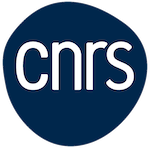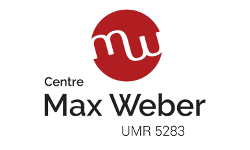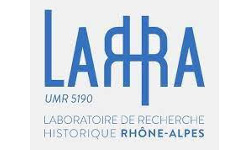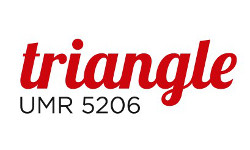Beyond the National: Globalization, Circulations, and Comparisons in Higher Education and Research
Beyond the National: Globalization, Circulations, and Comparisons in Higher Education and Research
December 17–19, 2025
RESUP Conference at Sciences Po, Paris
Until recently, most contributions regarding the transformations in higher education and research highlighted a well-established fact: the academic world was becoming globalized—or at the very least, increasingly international. These dynamics were multifaceted and had varying consequences depending on the higher education institutions and geographical areas involved. But they were undeniably underway, driven by trade liberalization, the cooperation it enabled, and international competition.
However, recent events—the COVID-19 lockdown period, Donald Trump’s re-election as President of the United States, the rise of neo-nationalisms, the war in Ukraine, and the consequences of the Israeli-Palestinian conflict—have shown that the intensification of international exchange is not an irreversible phenomenon. The academic world is not isolated from political events. Beyond their political and human impacts, these developments remind us that globalization, internationalization, and transnationalization are ongoing processes, still subject to transformation or even reversal as global circumstances evolve.
These elements serve as a starting point to examine the forms of academic exchange and relationships that develop beyond national borders, whether termed globalization, internationalization, or transnationalization. Rather than distinguishing these processes outright, we propose grouping them under the broader concept of supranational dynamics. While acknowledging their distinct characteristics, we aim to understand how these processes interact with each other and how they are tied to more clearly national or local dynamics. We also seek to restore their historical depth: these phenomena have long histories, but their forms, intensity, and interrelations vary greatly. Spatial variations must also be considered: supranational dynamics differ depending on the geographical region, on whether they relate to teaching or research, and they also create asymmetries—particularly technological ones—between different world regions.
Building on these analytical approaches, five thematic areas are proposed. They concern the infrastructures of international exchange, ideas and models, processes of deinstitutionalization, public-private relationships, and the theoretical and methodological challenges of studying supranational dynamics.
1. Infrastructures of Supranational Dynamics
To emerge and persist, supranational dynamics require infrastructures. These may take the form of organizations or institutions—scientific networks, international university or disciplinary associations, intergovernmental organizations, or private foundations. Infrastructures also include tools for measurement or ranking: for example, the H-Index and academic rankings enable comparison among researchers and institutions and help sustain the globalization of exchanges and reference frameworks.
Major global scientific facilities are also part of this infrastructure: from particle physics laboratories to large databases for the social sciences or life sciences, these are material foundations for scholarly exchanges on a global scale. Public policies—such as the Bologna Process, the European Research Council, or the creation of the European Higher Education and Research Area—also contribute to supranational dynamics.
Proposals may address several dimensions of these infrastructures:
- Their origins: These infrastructures have deep histories, as illustrated by CERN. Who were the reformers behind their creation? What were their goals? What obstacles did they face?
- Their framing effects: How do these infrastructures shape and constrain exchange? What kinds of circulation, globalization, or comparison do they foster? Are there disciplinary differences? What about disparities in access to material infrastructures and digital resources (databases, etc.) across countries or regions?
- Their historical regimes: What makes the contemporary period unique? Are these infrastructures marked by inertia or do they evolve to adapt to “new” global contexts? How do they accelerate supranational dynamics—and what happens when they are threatened or dismantled by political decisions? How is their legitimacy challenged, as seen with some UN institutions?
2. Ideas and Models: Production, Diffusion, Resistance
Reforms in higher education and research have long drawn upon foreign models and references. The Sorbonne or Bologna in the Middle Ages, Humboldt’s university in the 19th century, and the U.S. research university more recently have all served as influential models. This also applies to innovation: Silicon Valley, Route 128, or the Japanese model have likewise functioned as references.
Conference papers may address:
- Model emergence and circulation: Why do certain models become references? What facilitates the export or import of organizational forms or higher education concepts? Who promotes them? How are they formed within a state or region? How do they travel and evolve in the process? Do they reinforce or challenge global hegemonies? How do they fit into North—South exchange dynamics?
- Resistance to models: Institutions or national systems may define themselves in opposition to certain models. What resistances do these ideas encounter? How do these resistances manifest (e.g., in social movements)? How do they reshape the models themselves?
- Asymmetries: Models are often geographically anchored and can act as vehicles of influence. Germany in the 19th century, the USSR in postwar Eastern Europe, and the U.S. more recently exemplify this. How are these asymmetries experienced? How are spaces that lose their referential status affected? How do alternative models emerge in such contexts?
3. De-globalization, Alter-globalization, and Distancing from Globalization
Donald Trump’s election reflects a broader backlash against globalization, demonstrating that supranational exchanges can face significant setbacks. This raises several issues for the social sciences:
- Challenging the post-WWII order: This global order, strengthened after the fall of the Berlin Wall, was based on free movement of knowledge and academic cooperation. Who is challenging supranationalism today? In what forms and with what limits? Are current resistances destined to fail?
- Alternatives and new systems: Opposition to international order may generate new systems or logics. What principles underlie these alternatives?
- Spatial distancing from supranational dynamics: The U.S. retreat is highly visible given its previous centrality, but other regions—including within OECD countries—may also remain on the margins. Is this marginality imposed or chosen? Could it be a source of alternative exchanges?
4. Public/Private
Supranational dynamics raise questions about the interplay between public and private actors. Private players, from the Rockefeller and Ford Foundations to today’s multinational education groups and tech giants, have long influenced these dynamics. Foundations like the Bill & Melinda Gates Foundation play significant roles in global governance. Tech firms such as the GAFAMs may soon produce more research than traditional institutions.
- How are these private actors reshaping global academic exchanges?
- What is the role of families, especially wealthy ones, in shaping student mobility patterns?
- What role do governments, international institutions, and local authorities play?
- How do states sometimes attempt to obstruct mobility?
- How do social movements affect these dynamics—either by supporting exchanges or through boycotts?
5. Conceptualizing and Investigating Supranational Dynamics
Studies on globalization often critique methodological nationalism, which exaggerates national specificity and ignores global interconnections. The analysis of supranational dynamics also raises theoretical and methodological questions:
- What theoretical stakes are involved in using terms like globalization, circulation, transnationalization, international comparison, or world society?
- What are the methodological challenges in studying supranational dynamics?
- How can these be analyzed without disconnecting them from the national and local spaces where their effects are felt?
- Moreover, these concepts are not only academic—they are also used by policymakers and reformers. How do these “indigenous” uses circulate between academic and public spaces? Who promotes or opposes them? Which scholars engage in these transfers?
Submission Guidelines:
Paper proposals for the conference should take the form of a document of no more than 3,000 characters, specifying the research question, the approach used, and the sources that will be mobilized to address it. Proposals should also indicate which thematic area(s) of the call for papers they relate to. Submissions must be sent by September 15, 2025, to jerome.aust@sciencespo.fr and christine.musselin@sciencespo.fr.









